The SmartRunner Matcher uses the laser light section technology to capture height profiles and compares them with a taught reference profile. With up to 32 profiles stored in the sensor, it is perfect for positioning as well as presence and completeness checks of guided components.
The laser profile sensors are based on the unique SmartRunner technology. For the first time, this combines the proven laser light section technology with a 2-D vision sensor including LEDs and offers maximum performance in a compact sensor housing.
SmartRunner Matcher: The Specialist for Profile Matching
The SmartRunner Matcher combines application-specific profile detection with an integrated evaluation in a compact housing. The control unit of the laser profile sensor is optimized to detect deviations from a previously taught-in height profile.
First, a reference profile is taught in via an intuitive operating wizard. In addition, the permitted position and component deviations are defined. Based on this, the sensor verifies the detected profile of the object and its correct position via profile matching. Moreover, variants are available with further functions such as the use and storage of up to 32 profiles on one sensor and the output of the object position deviation. These offer different detection ranges of up to 700 mm distance as well as 300 mm X detection range.
The SmartRunner Matcher can be commissioned easily and intuitively: via the Vision Configurator—the uniform user interface for all vision sensors from Pepperl+Fuchs—via Data Matrix control code or via guided operation and parameterization with the software wizard.
Typical Applications
- Detection of small parts like screws, clamps, and studs
- Completeness check for battery cells, pens, pills, etc.
- Position check and output for boxes, pallets, and other objects
How It Works
This is how the detection of object contour, position and distance works with the Matcher:

Since not every object is the same, a suitable object tolerance must be defined. This is done by defining an envelope curve around a taught-in profile (1). Depending on this, quality values are automatically determined, from which quality threshold values can then be derived to distinguish between good and bad parts. Users can freely define how high the detection sensitivity of the sensor should be (2). Furthermore, displacement tolerances often result from trigger tolerances. With the Matcher, these can also be set in 0.1 mm steps in the X and Z directions so that they do not influence the measurement result (3). The SmartRunner then reliably detects deviating profiles as “Bad” (4).
Highlights
- Rugged and cost-effective presence, completeness, and position detection of components
- Precise profile matching, even with different surface structures, ambient light, and varying operating distances
- Independently adjustable object and offset tolerances and separate data output
SmartRunner Matcherが使用されるアプリケーション例を示します:
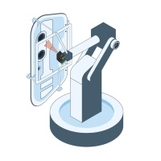
自動車産業では、車体は、プレハブのシートを使用して溶接されます。シートに不具合がある場合は、不具合を検出し、生産ラインから取り除かなければなりません。SmartRunner Matcherはターゲットを検出後、光切断法を用いてプロファイルを比較することで、部品が完全であるか確認します。
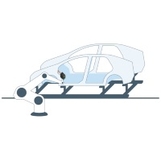
自動車のフレーム組み立てラインでは、ボルト、ねじ、クリップなどの留め具を使用して部品を組み立てます。SmartRunner Matcherは、これらの留め具が正しい位置にあるかどうかを検出し、コントロールシステムに信号を送ります。
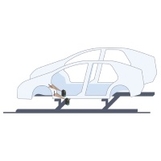
運転時の振動音を減少させるために、シリコン防振ダンパや「スティッキー(粘着性部材)」が自動車のフレーム部分に接着されます。SmartRunner Matcherは、それぞれの接着部の高さプロファイルをティーチ・インし、適正なダンパが正しい位置にあるかどうかモニタします。
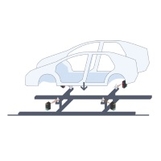
自動車生産では、車体はスキッド・コンベアでいろいろなステーションに搬送されます。スキッド・ボルトは、車体をスキッド・コンベアに据えつけて、車体の穴に押し込まれます。この過程を確実で安全にするために、SmartRunnerはあらかじめ、スキッド・ボルトの位置について確かめます。
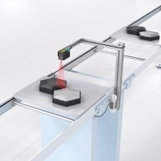
ロボットシステムやハンドリングシステムは、加工品や材料を生産ラインや処理システムに投入するために使われます。ロボットが供給物をピックアップする前に、搬送キャリヤの有無(存在モニタ)とキャリヤ上の材料の位置(位置のモニタ)をチェックしなければなりません。SmartRunner Matcherはシングルステップで両方の検出タスクを実行します。
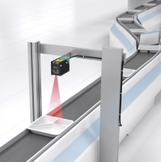
食品産業で料理をパッキングするとき、コンパートメントに区切られたプラスチックトレーがしばしば使用されます。料理が正しいコンパートメントに確実に詰められるために、あらかじめ白一色のトレーが正しく置かれていることのチェックが必要です。SmartRunner Matcherはこれらの難しい周囲条件下でも明確な検出結果を送ります。







 +81 45 6249077
+81 45 6249077